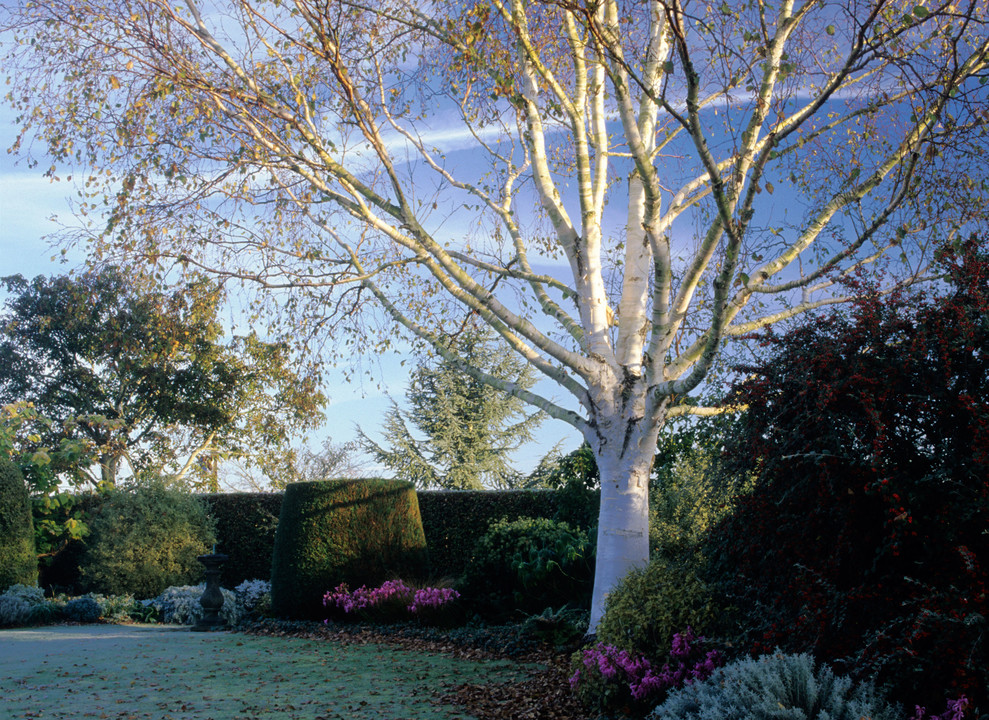
Betula utilis Jermyns Fact File
· Common name: Himalayan birch
·Environment: Grows in majority of well drained soils. Vigorous in growth and well suited for ornamental use due to its bark and leaves
·Canopy: Similar to the Jacquemontii, but its leaves are noticeably larger with deep, crinkle cut grooves running through them
·Bark: Glistening white bark that shines extremely brightly within luminous moonlight
Size: 10m high x 5m wide after 25 years
A very popular ornamental birch with an open canopy and almost shimmering, glistening white bark. This stunning form had originally caught the eye of Sir Harold Hillier himself.
Sir Harold was the third generation of Hillier to take on the family business, and was particularly fond of the birch tree and its varieties. Whilst walking amongst the rows of Betula jacquemontii growing in the fields, he noticed how brilliantly pure white the bark was of one specific tree.
Looking closer, he admired other unique features this tree possessed, such as the dramatic long catkins that swayed in the wind. These were over 20cm long, hanging pendula like miniature lambs tails. The leaves were also different, being much larger than the standard birch, with a lush green shade of emerald that highlighted the deeply ridged grooves.
These furrows in the leaves capture the slightest of breeze, causing the canopy to shimmer and dance.
Come the autumn, the larger leaves enhance the wonderful shades of buttery yellow, becoming even more pronounced within the neat conical canopy. These melt into toffee browns as they fall, allowing the barks pure feature to take the centre stage of winter.
What makes the tree seem so vibrant during the colder months is the older bark peeling back, reveling a pure snowy white layer beneath. To this day Jim Hillier cleans the bark of the Jermyns on the nursery to enjoy this feature.
As Sir Harold often did with little gems that he found and took his fancy, he cloned this tree and cultivated it for consistent production and supply. In fact, he was so fond of this cultivar that he named it after his house Jermyns within the Hillier grounds.
Since then the Sir Harold Hillier Gardens have been donated to Hampshire county council and managed as a charitable trust. It is now the fifth generation of Hillier that are on the company board, and we continue to grow this tree the same way Sir Harold did back when it first took his fancy in the 60s. This continued practice of its production ensures each and every Jermyns development are uniformed, consistent, with the purest white bark that glistens in the winter moonlight.
For something really special, try planting single stem Jermyns close to one another against a back drop of ever-green. Then on the ground level, plant bluebells that burst with spring vitality contrasting the snowy sternness of the clear stems. It is even more striking as a feature multi-stem with a carpet of red poppies underneath. The sea of summer red is breath-taking when enveloped against the bare skeletal architecture of the multi-stems leaders.
For any assistance with tree recommendations, specifications and supply, please do not hesitate in contacting the Hillier Amenity team.



